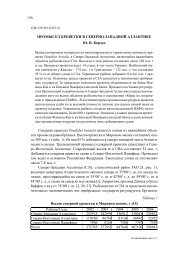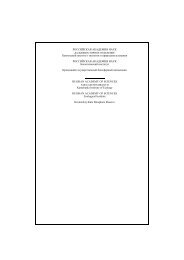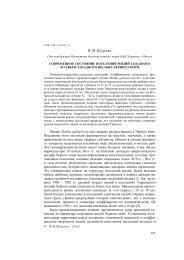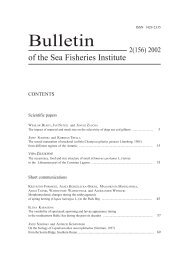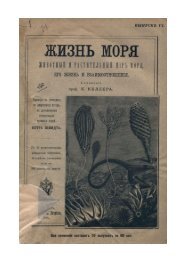Bulletin of the Sea Fisheries Institute 2 (153) 2001 - CEEMaR
Bulletin of the Sea Fisheries Institute 2 (153) 2001 - CEEMaR
Bulletin of the Sea Fisheries Institute 2 (153) 2001 - CEEMaR
You also want an ePaper? Increase the reach of your titles
YUMPU automatically turns print PDFs into web optimized ePapers that Google loves.
20<br />
JONATHAN A. HARE et al.<br />
Thunnus atlanticus<br />
0<br />
20<br />
40<br />
60<br />
50<br />
0<br />
-50<br />
80 -100<br />
Auxis spp.<br />
0<br />
40<br />
20<br />
40<br />
60<br />
0<br />
-40<br />
Depth (m)<br />
80 -80<br />
Euthynnus alletteratus<br />
0<br />
40<br />
20<br />
40<br />
60<br />
-40<br />
80 -80<br />
Katsuwonus pelamis<br />
0<br />
40<br />
20<br />
40<br />
60<br />
80 -80<br />
Scomrolabrax heterolepis<br />
0<br />
40<br />
0<br />
0<br />
-40<br />
Distance from Mean Depth (m)<br />
20<br />
40<br />
60<br />
0<br />
-40<br />
80 -80<br />
1 2 3 4 5 6 7 8 9 1 2 3 4 5 6 7 8 9<br />
Larval Length (mm)<br />
Fig. 4. Relation between larval length and depth <strong>of</strong> capture and residuals from average depth (see Figure 3)<br />
from May 1984 MOCNESS collections. A negative residual indicates larvae deeper than <strong>the</strong> average depth.



